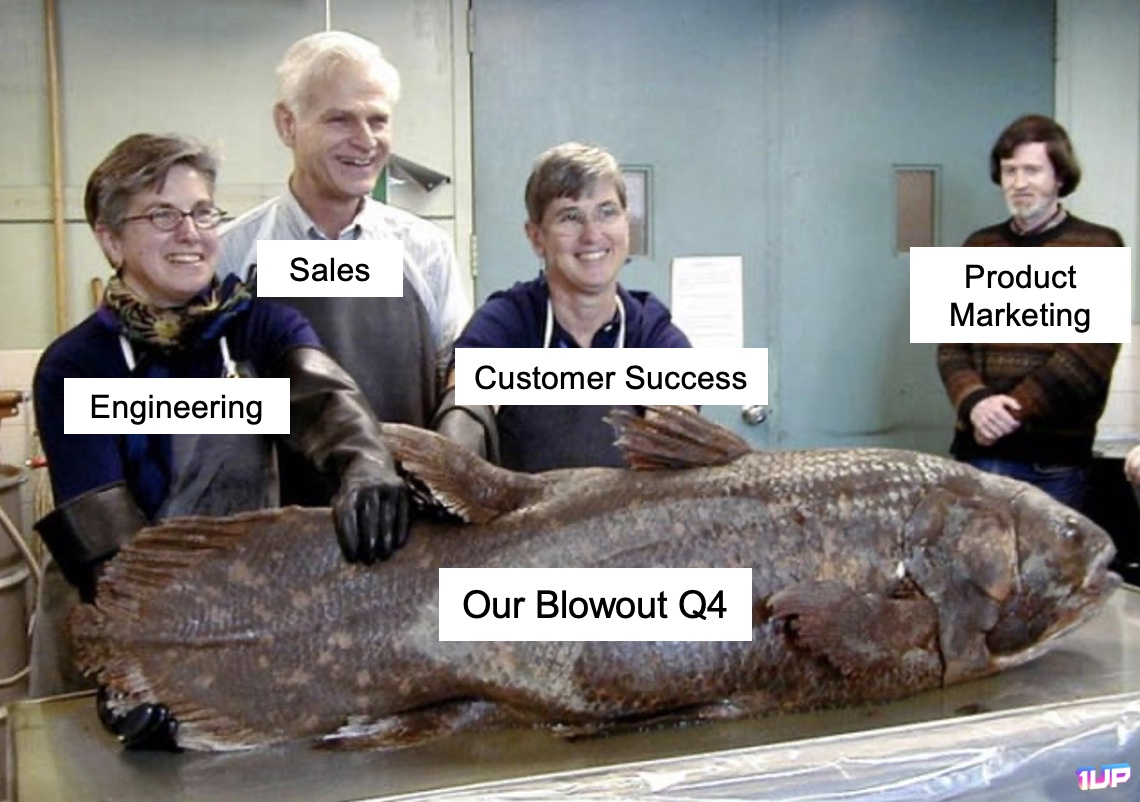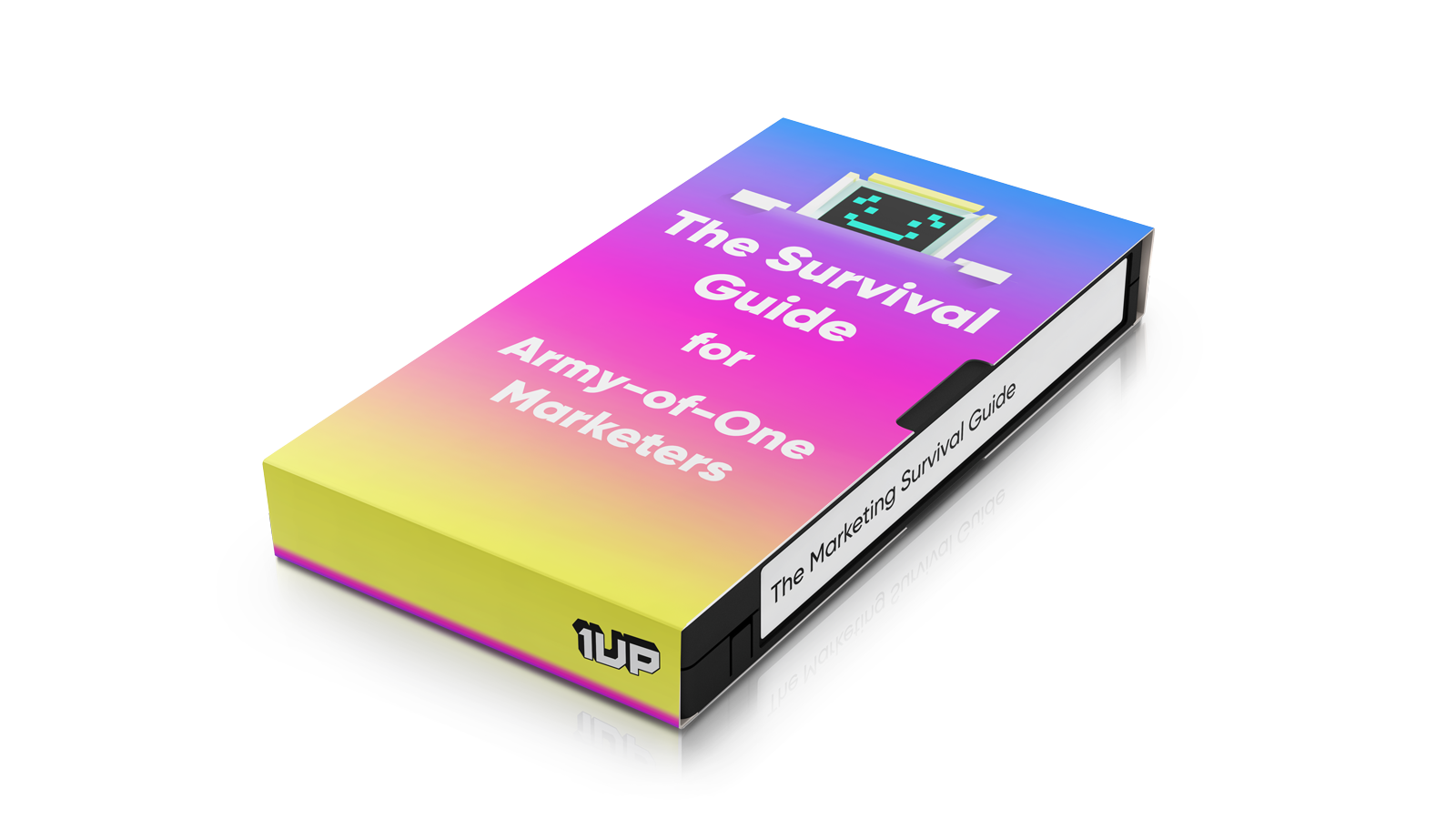Product Marketing Managers (PMMs) constantly juggle multiple high-stakes responsibilities. Many times, this is happening under intense pressure.
A recent study found that 80% of PMMs are burnt out. Who can blame you? It’s hard enough to create messaging and differentiate. But then you have to do it around the clock. It’s a full-time job in and of itself.
Sales reps, engineers, and customer service teams are expected to understand their own products pretty deeply, which makes sense. But PMMs are expected to know the products so well that you can answer any question about them.
On top of internal knowledge, PMMs are also expected to have external knowledge of your market landscape. You then have to distill that knowledge down and package it up for your sales team to use.
Finally, you can get your teams to actually use all the content they create.
It’s a constant battle.
And look, AI won’t make any of these problems disappear. But it has helped tremendously. Let’s look at exactly how AI has is being used.
Key Takeaways
- AI helps PMMs by reducing busywork so product marketers can focus on high-value strategic work.
- AI enables faster, more scalable execution, whether it’s launching campaigns, answering GTM questions, or generating content briefs.
- The most effective PMMs will be the ones who adopt AI product marketing tools early and thoughtfully. It’s become a competitive advantage in crowded markets.
The Pain Points Product Marketers Face Mirror Those of Their Sales Colleagues
You may not be carrying a quota like sales reps. But PMMs’ work deeply influences pipeline performance, competitive positioning, and company perception. And like your colleagues in sales, you’re overburdened, under-resourced, and expected to be masters of everything.
Let’s break it down:
- Messaging and Differentiation: Crafting compelling, differentiated messaging is a deeply creative process. But in fast-moving markets, the pressure to “always be positioning” makes it feel more like a grind than a strategic advantage. You’re not just telling a story. You’re updating the story every week as the market shifts and competitors react.
- Product Mastery: The product manager is expected to know the ins and outs of their product, often better than the product managers themselves. But no one person can possibly stay on top of every feature, roadmap update, or edge case. This is especially true across multiple product lines.
- Competitive Analysis & Enablement: Understanding the competitive landscape requires ongoing research and synthesis. Once you’ve gathered that intelligence, you have to translate it into tools that sales will actually use. This means battlecards, objection handling guides, and win/loss insights.
- Content Utilization: Even when PMMs produce exceptional content, getting internal teams to use it remains a constant battle. You end up answering the same questions repeatedly because the right assets are hard to find or poorly understood.
These challenges aren’t going away. But the emergence of AI marketing has begun to reshape what’s possible for the product marketing manager and the many teams involved.
1. Messaging and Positioning
Effective messaging starts with market insight. The right AI tool can help PMMs distill massive amounts of qualitative and quantitative data into usable narratives.
- Tools like Sprinklr and Talkwalker can now crawl user reviews, social conversations, and forums to extract trends, product sentiment, and common pain points. Instead of manually combing through G2 or Reddit, AI can deliver a summary of what people love and hate about your competitor’s product.
- An AI agent can help generate positioning statements or messaging matrices. They can do this by combining market data with internal content and tone.
- Tools like Jasper and Grammarly Business use GPT-style models to refine tone, clarity, and brand alignment across messaging. This is crucial for PMMs operating across regions and personas.
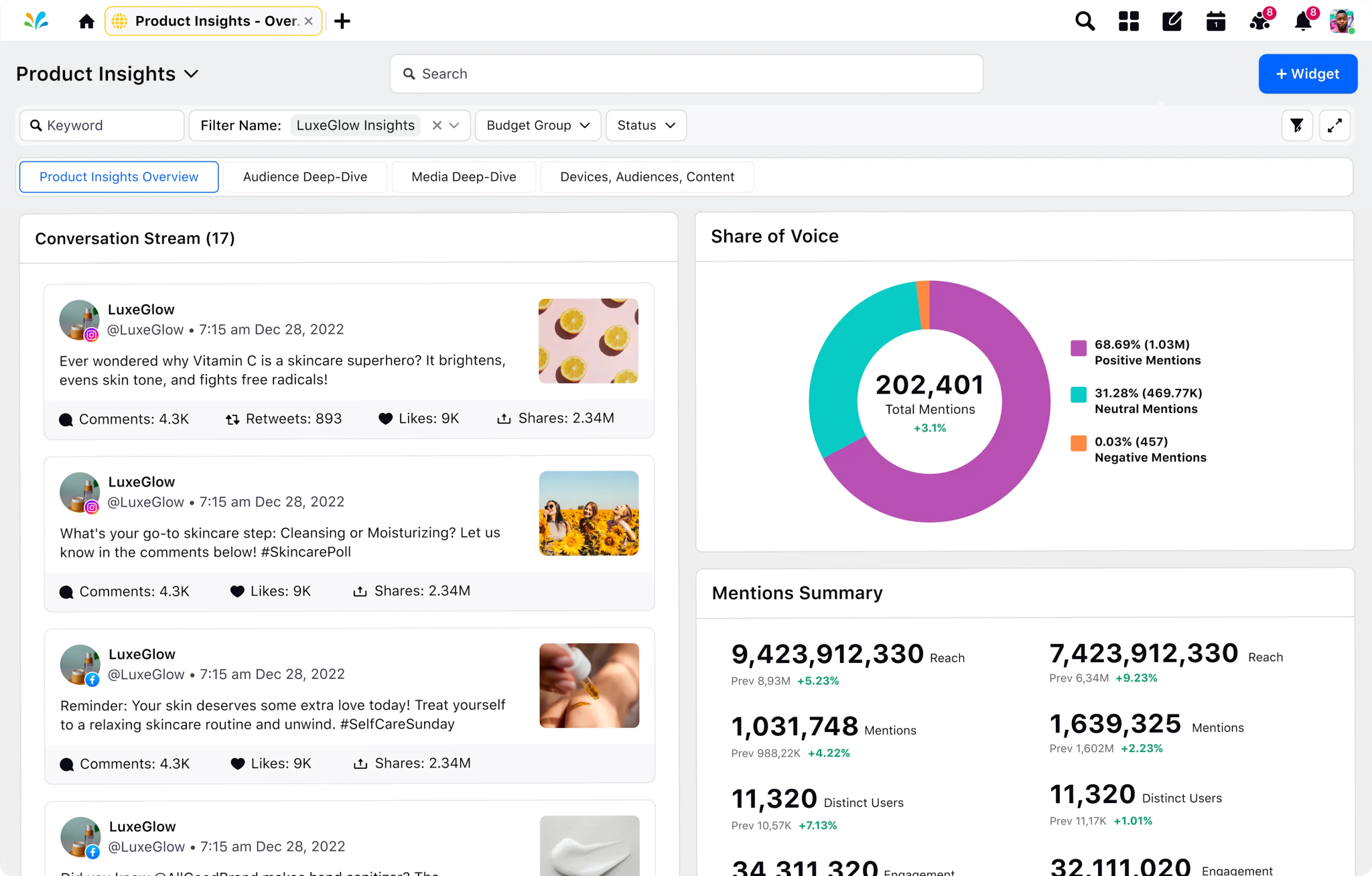
2. Competitive Enablement
AI takes the heavy lifting out of competitive research and content creation:
- Platforms like 1up can help you with competitive intelligence when you need it, while tools like Crayon and Klue track competitor updates across digital channels. They’ll automatically flag major changes in pricing, features, or messaging for you.
- These platforms also suggest updates to battlecards and win/loss content in real time. PMMs can then edit and approve. So you won’t have to start from scratch.
- You can now tune AI-generated comparison pages and talk tracks to specific buyer personas or deal stages. This means sales can now get more relevant assets on demand.

The product marketer fields an endless stream of questions from Sales, CS, and GTM teams: “Do we integrate with X?” “Where’s the latest ROI calculator?” “What’s our differentiator against Y?”
You once had to manually answer or send links to Notion docs. Now, many teams are using instant Q&A tools powered by generative artificial intelligence.
- 1up, for example, connects to your source of truth (your website, docs, enablement decks, previous questionnaires, etc.) and answers internal questions instantly. And you’ll get it all in plain language, with sources linked.
- This gives GTM teams fast, accurate answers without bugging PMMs. AI algorithms also ensure your product messaging remains consistent across every channel.
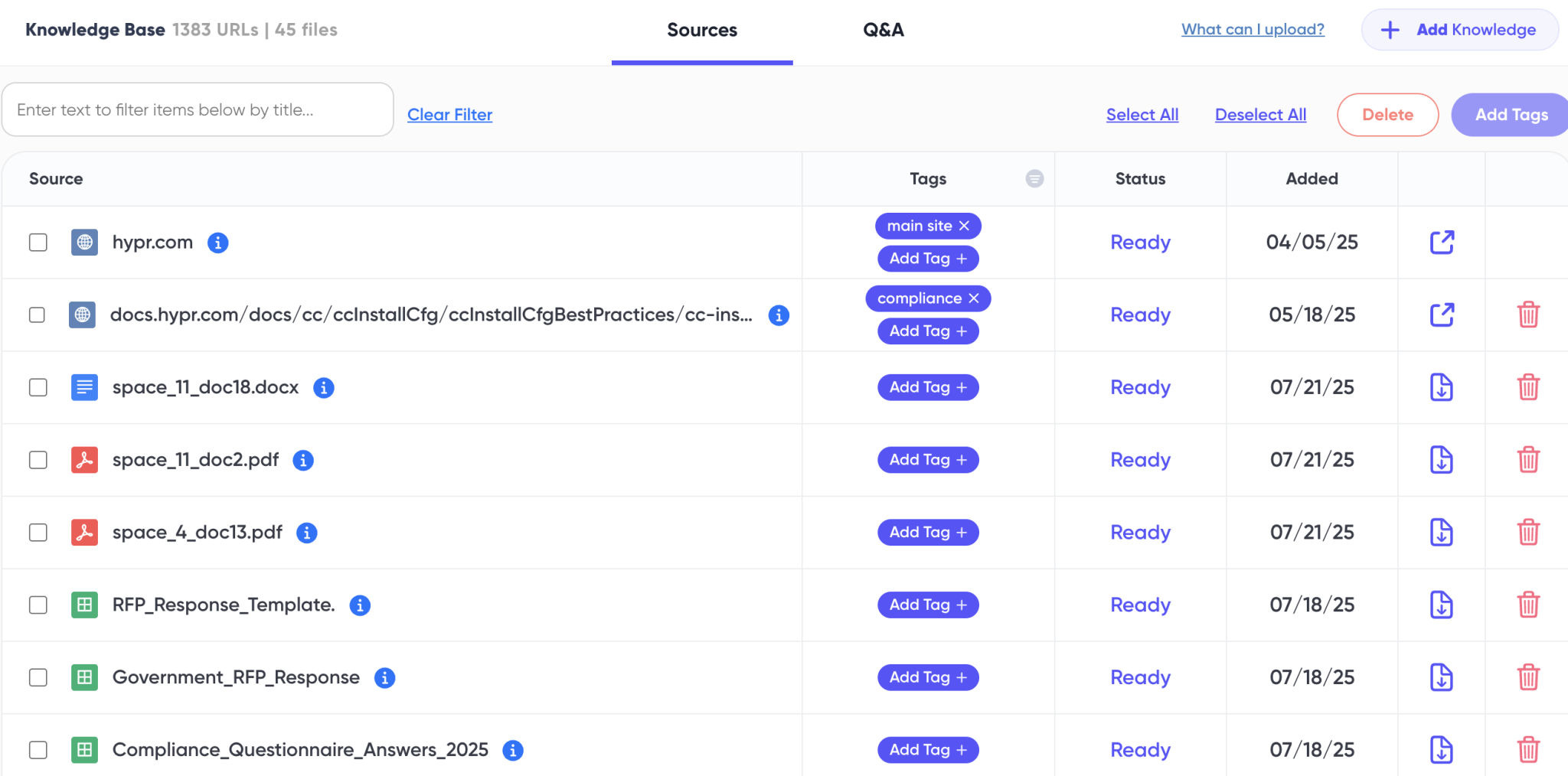
3. Campaign Planning & Optimization
Product marketing campaigns span email, social, web, paid, events, and more. AI marketing tools can help orchestrate these complex, multi-channel efforts.
- Orchestration tools like Mutiny and Metadata.io use AI to recommend to you the best audiences, channels, and messages for your campaign objectives.
- AI also helps with your budget allocation. It will use historical data to predict where your dollars will perform best.
- Real-time feedback loops let your marketing team optimize campaigns in an ongoing fashion. For example, it can pause underperforming creatives or shift budget to high-converting segments.

4. Product Launches
Product development launches are both high-stakes and cross-functional. Teams are using AI in many ways to improve upon their planning and execution:
- Gantt chart generators like ClickUp AI and Motion can turn simple inputs (like “launching feature X on August 10”) into detailed workback plans. You’ll also get task assignments and timelines.
- Sentiment analysis tools measure customer reactions to a launch in real time across social, review sites, and chat.
- Product usage analytics platforms like Pendo and Heap are increasingly layering AI to help PMMs understand how to adopt new features. It will even show you why some fail to gain traction.

5. Content Creation & Personalization
It could be a product blog post, an email nurture sequence, a landing page, or a pitch deck. Yep. You already know PMMs are responsible for an insane amount of marketing strategy.
- Platforms like Copy.ai and WRITER create first drafts and tailor them to tone, persona, and stage of the funnel.
- A/B testing is no longer limited to subject lines. AI uses customer data so teams can test and optimize full landing pages. You can even test entire email flows based on engagement patterns.

6. Audience Intelligence & Segmentation
Deep audience understanding is critical to your product marketing strategy. And AI gives you tons of insight into the customer experience, customer engagement, and customer behavior.
- Tools like Humantic AI and Clearbit analyze CRM and behavioral data to give you rich, evolving buyer personas.
- Platforms such as Optimizely or Dynamic Yield let you tailor your content and messaging based on live behavior.
- This allows PMMs to personalize at scale. So you can focus on engagement without having to manage dozens of static segments.

7. Analytics & Reporting
You’re spending hours compiling dashboards, writing reports, and trying to show impact on your marketing efforts.
- Automated dashboards (e.g., Domo, Tableau with GPT plugins) now offer narrative summaries that explain what happened and why in plain English.
- Tools like Hightouch and Funnel bring in cross-channel data and offer predictive metrics. These include pipeline contribution and launch ROI projections.
- PMMs can quickly slice data by campaign, persona, or product line. And you don’t need SQL or data science support.

8. Analyst Relations
You’re managing relationships with influential analyst firms like Gartner, Forrester, and IDC. Yes. Market research is important work, but it’s also a time-consuming part of your GTM strategy. Integrating AI is starting to ease the burden here as well:
- Internal GPT-based assistants trained on historical analyst interactions can give you recommended answers. This saves time and reduces duplicate effort across teams.
- AI tools streamline collaboration across product, engineering, legal, and marketing by tagging owners. This will help surface relevant data and suggest responses in shared workspaces.
- By using past approved responses, AI helps ensure messaging remains consistent across multiple analyst engagements and product lines.
- Analyst questionnaire automation – Analysts often send long winded questionnaires to get every little detail about your products. AI is helping PMMs respond to lengthy analyst questionnaires (like Gartner’s Magic Quadrant or Forrester’s Wave reports). It does this by generating draft responses based on previous submissions, product documentation, and internal knowledge bases. Here’s how:
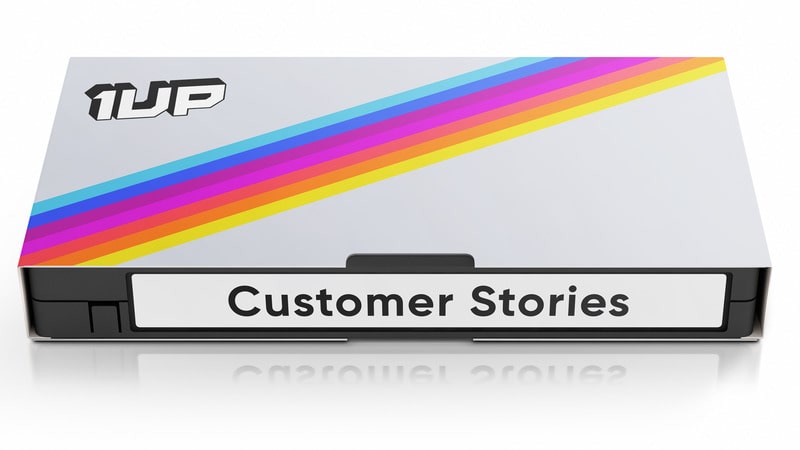


 Instagram
Instagram 


